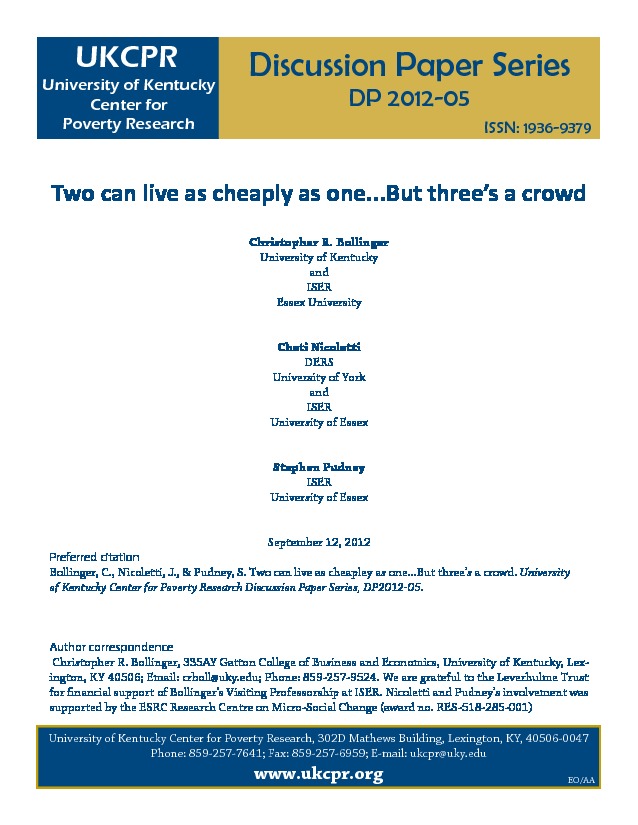To measure poverty, incomes must be made equivalent across households with different structures. In this paper, we use a very flexible ordered response model to analyze the relationship between income, demographic structure, and subjective assessments of financial wellbeing drawn from the 1991-2008 British Household Panel Survey. Our results suggest the existence of large-scale economies within marital/cohabiting couples, but substantial diseconomies from the addition of children or further adults. This pattern contrasts sharply with commonly-used equivalence scales and is consistent with explanations in terms of the capital requirements associated with additions to the core couple.
Research
PovertyPDF Thumbnail
